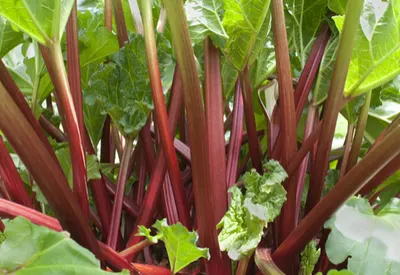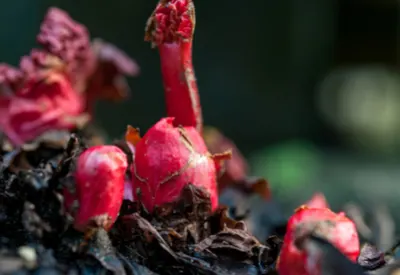If you are looking for a great perennial vegetable to add unique flavor to your garden, then you need to grow rhubarb!
Rhubarb is a wonderful perennial vegetable crop that will provide a tasty crop year after year. It is simply delicious in pies, jams, jellies and more.
Rhubarb is one of the first vegetables that can be harvested from the garden each year.
Its long, reddish, celery-like stalks shoot up through the ground, signalling the start of the garden season for many around the country.
Rhubarb sometimes gets a bad rap because the leaves of the plant are poisonous. However, it is only the tasty, nutritious, and safe reddish stalks that are harvested and used for culinary purposes.
Once planted, it is one of the easiest, low-care plants you could ever have in the garden.
Other than a little mulch and cutting back the foliage each fall, it will grow with little effort.
Rhubarb grows best in climates where the winter sees freezing temperatures.
It helps to develop deeper flavors in the stalks, Rhubarb can be grown as far south with success in growing zones 6 and 7. North of that, and the flavor only gets better!
How To Plant And Grow Rhubarb
Rhubarb is a perennial plant that will grow for 5 to 10 years. With that in mind, you need to prepare the planting hole so that it can provide a good growing medium for years to come.
Rhubarb performs best in full sun, and needs a fair amount of space to grow.
Mature plants can grow up to 3 to 4 feet in diameter, and just as tall. It is important to select a location that will allow for all of that growth.
You can grow rhubarb either by dividing existing plants and transplanting, or purchasing crowns to plant.
Either way, it should be planted in the early spring as soon as the ground is loose enough to work. Product Link : Rhubarb Crowns
Planting
Before planting crowns, prepare the planting hole by digging in the soil 18″ deep and 18″ in diameter.
Fill the hole with an equal mixture of soil and compost. This is a great time to add in a cup or two all-purpose organic fertilizer.
As for what works best, worm castings are an excellent choice. See Our Article : Worm Castings, The Ultimate Organic Fertilizer
Plant the crowns so that the tips of the buds are just below the soil line, about 1 to 2″. Place a light layer of straw or shredded leaves on top.
Water in each crown with about 1/4 to 1/2 gallon of water.
Be sure to water first-year transplants and crowns every few weeks. Proper moisture is a key to getting new crowns off to a good start.
Allow the plants to grow freely the first year without harvesting.
You can harvest beginning in the second season, and as the plant matures, each year, your harvest will grow.
In the fall, be sure to cut back the plants foliage each year and mulch with 2 to 3 inches of straw or leaves.
This helps protect the plants through the harsh winter temperatures.
Rhubarb should be divided every 5 to 8 years to ensure that plants maintain optimum growth. Product Link : Worm Castings
Share Your Garden Or Advice With The World!
Do you have a great gardening tip? Or perhaps you would like to share a few pictures and a story about your own personal paradise? Then email us today at info@thisismygarden.com. You can also use the “Feature My Garden Tip”button at the top of the website for your entry.
Help make This Is My Garden the best garden site around and share your garden knowledge with fellow gardeners! This article may contain affiliate links.


